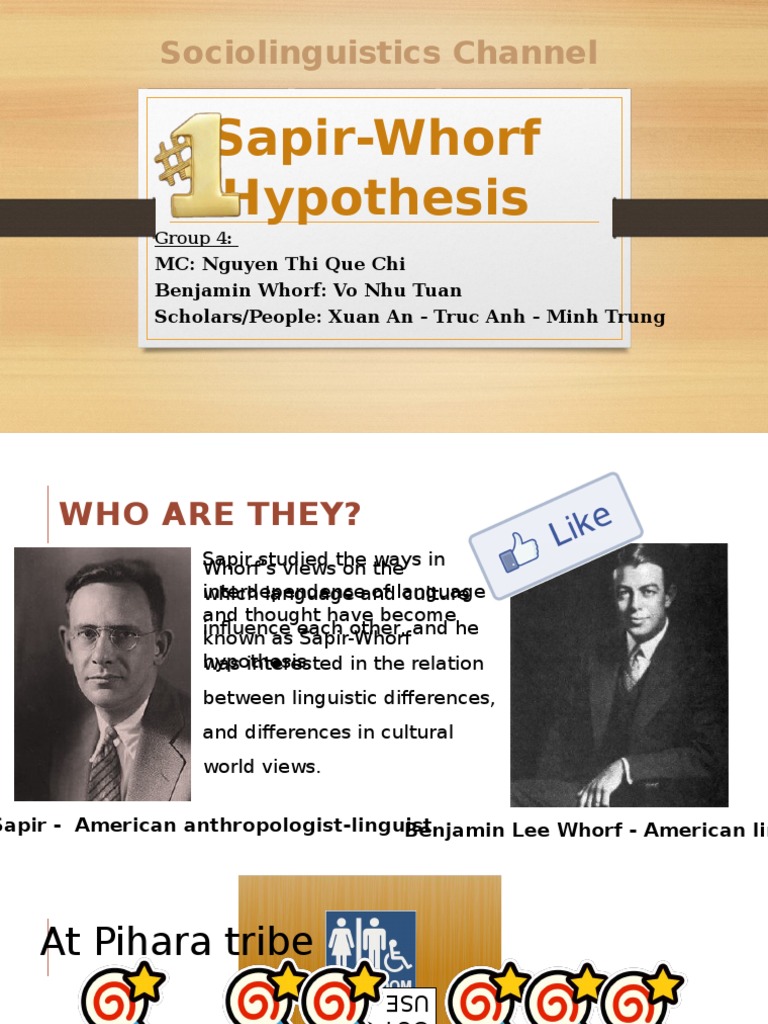The Sapir-Whorf Hypothesis, often encapsulated in the phrases “linguistic relativity” and “linguistic determinism,” posits that the structure of a language affects its speakers’ worldview and cognition. This theory, conceptualized by linguists Edward Sapir and Benjamin Lee Whorf in the early 20th century, has spurred an expansive dialogue about the intricate relationships between language, thought, and cultural perception. It invites us to ponder: does the language we speak shape the way we perceive reality? If so, how might this affect our understanding of complex issues like climate change?
In exploring the Sapir-Whorf Hypothesis, consider the languages that categorize colors differently. For instance, speakers of Russian, which has distinct terms for lighter and darker shades of blue, exhibit a heightened ability to discern these nuances compared to English speakers, who lump them under a single category. This phenomenon raises a compelling question: do the lexical variations in a language imbue its speakers with a different perception of color? Can we infer that these variations extend beyond mere visual perception to influence how we interpret the world around us?
To illustrate the implications of this hypothesis, let’s delve into an example derived from the concept of snow in Inuit languages. The Inuit have multiple words to describe various types of snow—each term conveys distinct characteristics, such as the snow’s texture, moisture content, or suitability for construction. This linguistic diversity reflects an intimate relationship with their environment, suggesting that their perception of snow is intricately layered, informed by cultural significance and practical necessity. One might argue that this multiplicity of snow terms enables Inuit speakers to navigate their arctic landscape with superior comprehension. In contrast, English speakers, with merely one term for snow, might lack the precision that Inuits possess. Therefore, does this suggest that language shapes not only perception but also environmental interaction and survival strategies?
Further examining the connection between language and thought, the humorous yet enlightening notion of “whale” in the context of climate change poses a playful challenge. When environmentalists communicate the threats of climate change, they often use terms like “greenhouse gases,” “carbon footprint,” and “sustainability.” These words tap into varying shades of urgency and responsibility. However, the question remains: does the choice of vocabulary significantly alter our responses to such pressing issues? For instance, do you feel differently about climate change when discussing it in terms of a “sustainability crisis” versus an “existential threat”? The implications of linguistic choices are profound, impacting not merely our conceptual framework but also the actions that result from it. Can we say that language has the power to inspire action or foster apathy?
Some linguistic theorists extend the implications of the Sapir-Whorf Hypothesis into the realms of action and behavior. If language shapes thought, then it inherently influences social policies and environmental practices. For example, in societies where languages emphasize collective action towards communal well-being, there may exist a stronger propensity for collaborative environmental stewardship. This stands in stark contrast to cultures with more individualistic language structures. It raises an inviting query: are we more inclined to act responsibly towards our environment dependent upon the linguistic frameworks we inhabit?
The Sapir-Whorf Hypothesis challenges us to contemplate the breadth of our communicative tools. The way we articulate environmental concerns can determine public response and policy formation. As the climate crisises escalate, it becomes vital to engage in purposeful language that evokes urgency, hope, and collective action. This leads us to reflect on the effectiveness of our communication strategies: are we merely conveying information, or are we embedded in an intricate dance of words that shapes shared understanding and action?
Moreover, the relationship between language and perception extends into environmental discourse through metaphors. Take, for example, the metaphor of “the earth as a fragile ecosystem.” This phrase encapsulates a certain fragility, persuading audiences to view the planet as something that requires careful nurturing and protection. It poses an implicit challenge: does this metaphor resonate sufficiently to galvanize active participation in combatting ecological degradation? Alternatively, if we instead frame the conversation in terms of “the earth as a resilient system,” does that evoke a sense of optimism and agency, inviting a different kind of narrative—one focused on restoration rather than mere conservation?
In closing, the Sapir-Whorf Hypothesis serves as a profound lens through which to examine the intricacies of language’s impact on thought and action, especially concerning our response to environmental challenges. Language is more than a tool for communication; it shapes our mental frameworks, influences our perceptions, and ultimately drives our behaviors. In this era of climate urgency, reflecting on how we articulate environmental issues could unlock pathways towards deeper understanding and more robust action. The interplay between vocabulary and perception is not just an academic exercise; it is a fundamental aspect of how societies adapt to—and strive to mitigate—the complexities of climate change.
